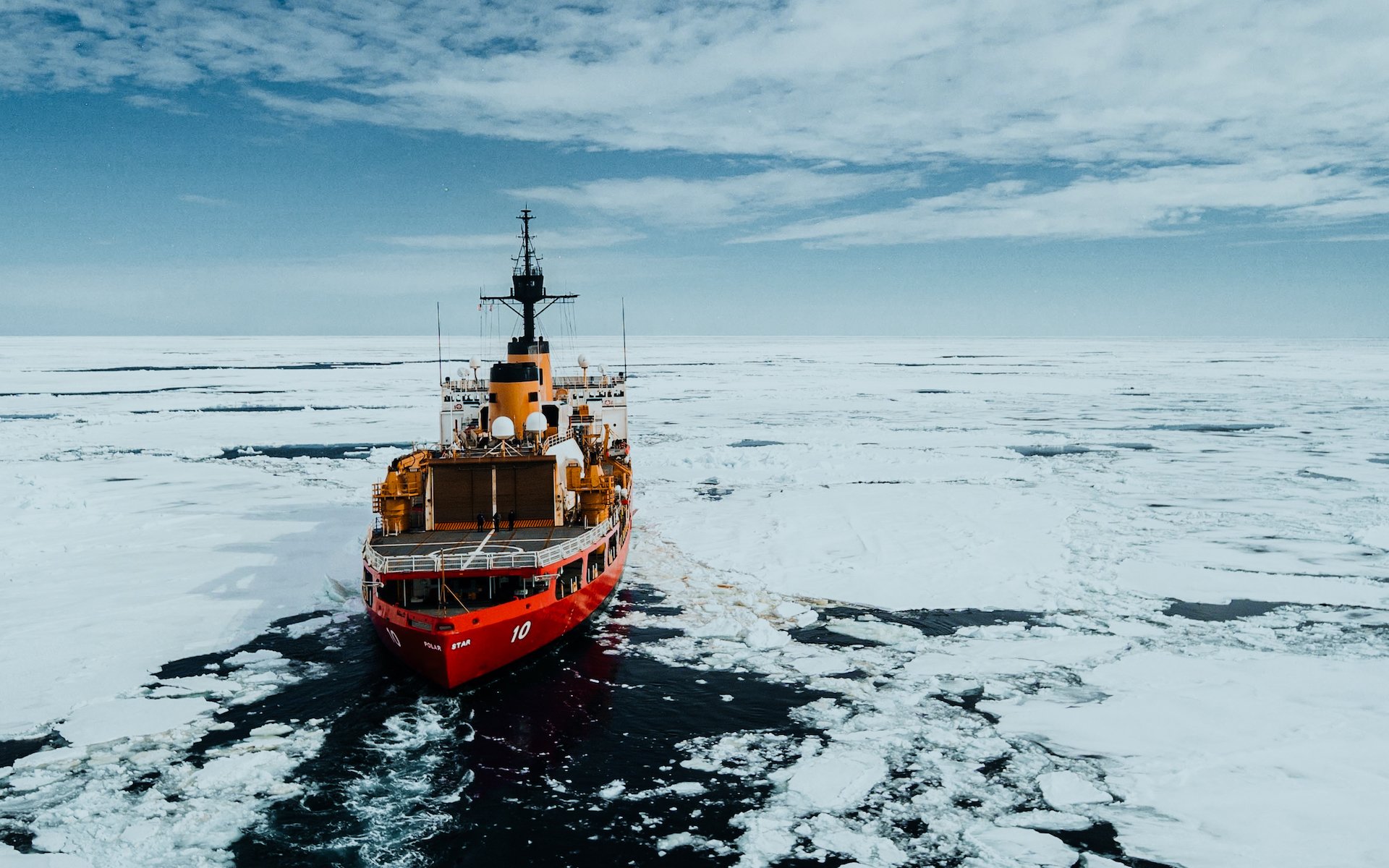
The Coast Guard’s heavy icebreaker, Polar Star, cuts through pack ice in the Southern Ocean on its way to Antarctica in support of Operation Deep Freeze on Dec. 28, 2022. US Coast Guard photo by Petty Officer 3rd Class Aidan Cooney.
Come spring, Northeasterners start planning beach days at the Jersey Shore, but that isn’t true for some of New York’s Guardsmen. Every April, parka-clad airmen load into ski-equipped cargo planes bound for a colder coast. Like a flock of metallic geese, the LC-130 “Skibirds” fly their passengers north to summer in the Arctic Circle. It is in the high north that air crews from the 109th Airlift Wing prepare for Operation Deep Freeze: America’s annual mission to the other pole.
“We train in Greenland for practice,” Maj. Dia Ham, an LC-130 pilot, told Coffee or Die. “You try to experience as many different flight conditions as possible before you’re allowed to go to Antarctica as the member of a six-person crew.”
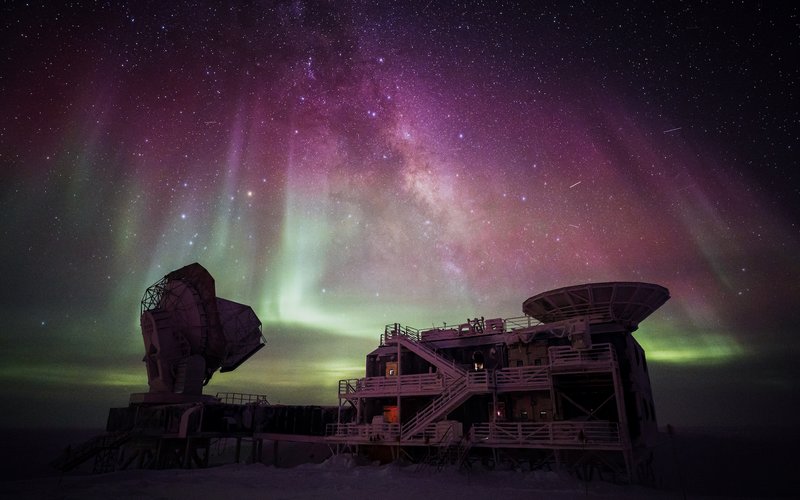
Auroras Australis fill the night sky over the South Pole Telescope and BICEP Telescope at Amundsen-Scott South Pole Station, Antarctica. Photo by Matt Young/National Science Foundation.
Because Greenland isn’t very green — the surface of the Danish island is nearly 80% ice — it provides air crews with flight conditions similar to those found on cue-ball-like Antarctica. At both destinations, pilots, like Ham, ski their Hercules cargo planes in to land on snow-covered strips. The experience is similar to a skier navigating a slope, only the LC-130 has roughly 12-foot-long by 5-foot-wide skis.
After a summer of Arctic flying under their belts, New York’s Guardsmen return home in August and prepare to fly south in support of US scientific research on Antarctica — the coldest, driest, and windiest of the seven continents.
Related: Cargo Jet, Hurricane Hunter, Gunship: Evolution of the C-130
History of Operation Deep Freeze
In 1952, more than 40 nations announced that in five years they would carry out scientific research around the world. With the ambitious endeavor, dubbed the International Geophysical Year, the countries aimed to mend Cold War divisions through scientific exchange. In reality, the 18-month IGY would fuel geopolitical tensions by kick-starting the “Space Race” with the Soviet Union’s launch of Sputnik in 1957. However, the program also gave way to continuous, peaceful research on Antarctica.
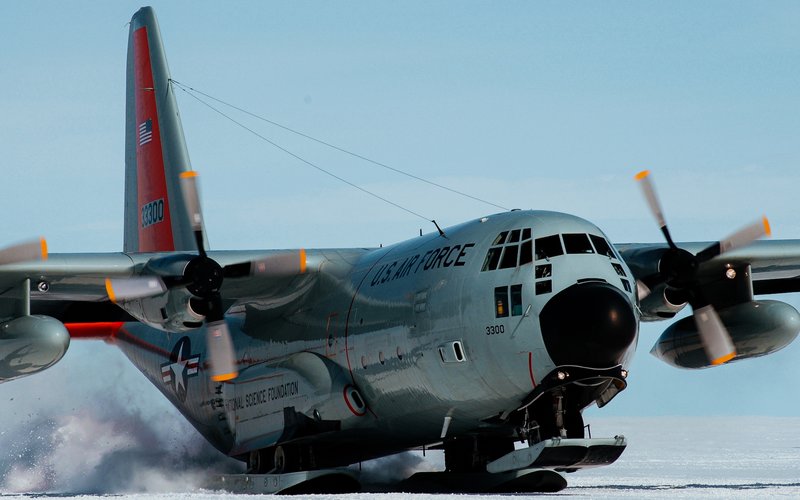
An LC-130 Hercules from the New York Air National Guard’s 109th Airlift Wing takes off on the Greenland ice cap during a mission in September 2008. New York Air National Guard photo.
As part of the IGY, a dozen countries, including the US, pledged to study subjects ranging from glaciology to geomagnetism on Antarctica, the least-explored region on the surface of Earth. At that point, only half of the ice-covered region, which is almost twice the size of Australia, had been seen by human eyes.
In 1954, almost three years before the trip, the US Navy formed Task Force 43 to build the infrastructure that would support the arrival of American researchers on the continent. That mission was named Operation Deep Freeze I. Led by Adm. Richard Byrd, a veteran of four previous Antarctic expeditions, Deep Freeze I yielded the first permanent US stations on the southernmost continent.
To conduct air operations for the inaugural mission, the Navy stood up what would become Antarctic Development Squadron Six, or VXE-6, better known as the Puckered Penguins. During that first season, the air crews flew nine long-range flights to explore Antarctica’s largely uncharted ice sheet, which holds 70% of the world’s fresh water.

R4D pilot Lt. Cmdr. Gus Shinn cranks up the aircraft Que Sera Sera on Nov. 21, 1956, before taking off for the South Pole. Que Sera Sera was the first aircraft to land at the South Pole less than a month earlier on Oct. 31, 1956. US Navy/National Science Foundation photo.
After Deep Freeze I, the mission continued every year to support America’s research on Antarctica. During the second mission, on Oct. 31, 1956, one of the Puckered Penguin’s R4D Skytrains became the first aircraft to touch down at the South Pole.
Only weeks later, pilots returned to drop off a handful of sailors. With the help of 11 sled dogs, the eight men from the US Naval Construction Battalion, better known as the “Seabees,” began construction on the first permanent outpost at the South Pole, now referred to as the “Old Pole.”
In 1960, with the fifth mission underway, the Navy started indicating its annual trip to Antarctica by year rather than sequential number. Instead of Deep Freeze V, that year’s journey south became known as Deep Freeze 60. The Puckered Penguins would go on to resupply the US research stations across Antarctica for more than 40 years, until the 109th Airlift Wing took full control of their duties in 1999.
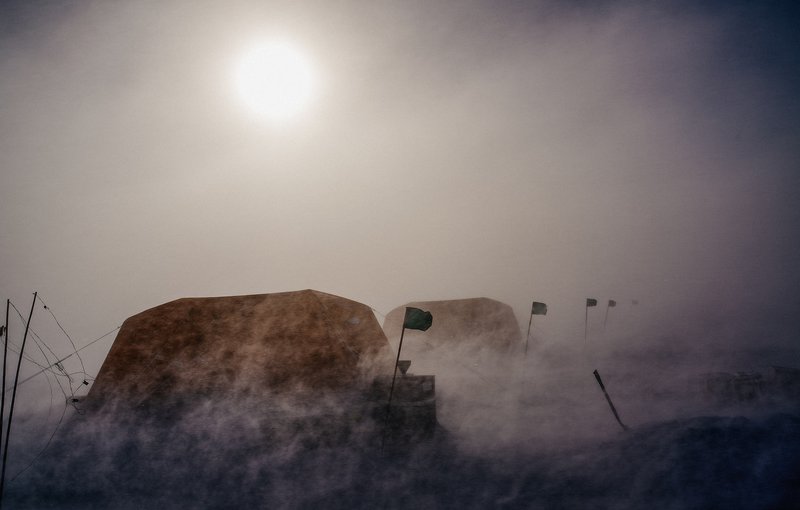
During a midday snowstorm on Nov. 22, 2019, at Allan Hills field camp, hurricane-force winds reduce visibility to a few yards. Scientist John Higgins and a drilling team spent more than two months extracting ancient ice cores from this area above the Mawson and McKay Glaciers in Antarctica during the 2019 austral summer. Photo by Ivan van Coller/National Science Foundation.
Operation Deep Freeze Today
Nearly 75 years after Operation Deep Freeze I, US service members still support America’s research on Antarctica. Every winter in the northern hemisphere — summer for the bottom of the world — Joint Task Force-Support Forces Antarctica provides logistical support to the National Science Foundation’s stations while the southernmost continent has 24 hours of daylight.
During the austral summer, which stretches from October through March, roughly 5,000 people inhabit Antarctica, not including the 1,000 personnel floating around on the continent’s waters. Researchers make up most of the transient population, with roughly 700 hailing from the United States.
With so few inhabitants (at its peak, Antarctica has roughly one person per every 1,000 square miles), maintaining normal infrastructure is a challenge. The US military steps in to fill the gap. According to Ham, there are roughly 150 American service members providing logistical support to researchers on Antarctica at any given time during a summer season.
Related: ‘Climb to Glory’ — A History of the US Army’s 10th Mountain Division

An LC-130 from the 139th Expeditionary Airlift Squadron lands at Williams Field, a compacted snow runway, at McMurdo Station, Antarctica. US Navy photo by Senior Chief Mass Communication Specialist RJ Stratchko.
Coast Guard and Air Guard
The Coast Guard’s Polar Star, the only heavy icebreaker in the US fleet, has deployed to the Southern Ocean more than 20 times. The cutter plays a leading role in Operation Deep Freeze by carving a navigable channel through miles of ice up to 21-feet thick on its way to McMurdo Station, Antarctica.
“It’s quiet and peaceful and just beautiful — the mountains and then the water when the icebreaker comes in and opens up McMurdo Sound for the other ships to come in,” Ham said. “You have a beautiful weather day, and you look out from McMurdo Station — or down when you’re flying over — and it’s just vast openness.”
By opening the sound, Polar Star cuts a path for supply ships to reach McMurdo Station, the United States Antarctic Program’s logistics hub and the largest community on the continent. McMurdo Station has more than 100 buildings and is capable of housing more than 1,000 residents. In addition to cargo ships, US Air Force C-17s fly supplies in from Christchurch, New Zealand.
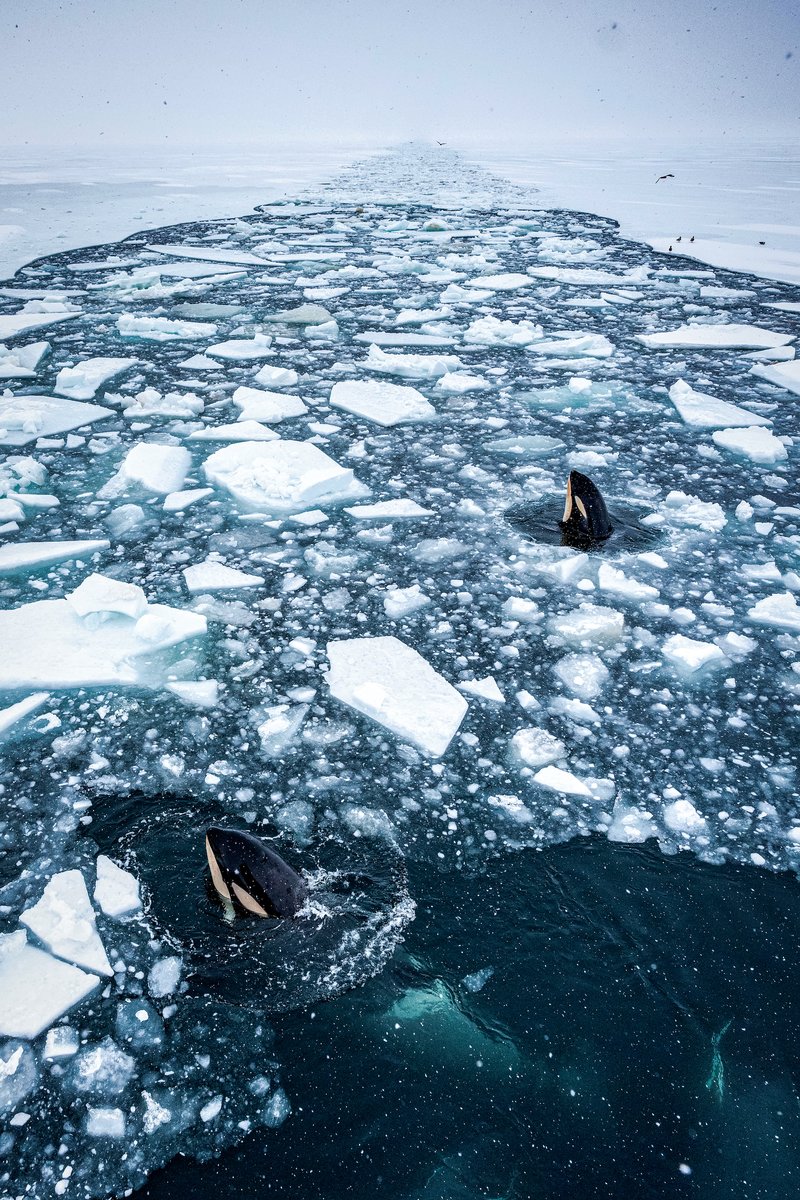
Orcas spy-hop behind Polar Star as the Coast Guard’s cutter conducts ice-breaking operations in the Southern Ocean on Jan. 1, 2023. US Coast Guard photo by Petty Officer 3rd Class Aidan Cooney.
That is when the 109th Airlift Wing takes over. Six days per week, LC-130 air crews hop around the continent on short day-flights to resupply America’s permanent stations and a handful of popup camps that change from summer to summer. By Skibird, the New York Guardsmen deliver everything from food and personnel to high-tech science equipment, such as components of IceCube, the world’s largest neutrino observatory.
Perhaps most importantly, the 109th’s crews offload fuel to keep the remote stations humming during the height of summer and when the harsh, sunless winter rolls in. That is when most scientists — save for a brave few — head home, and military support dwindles.
Read Next: So You Want To Buy a Humvee?
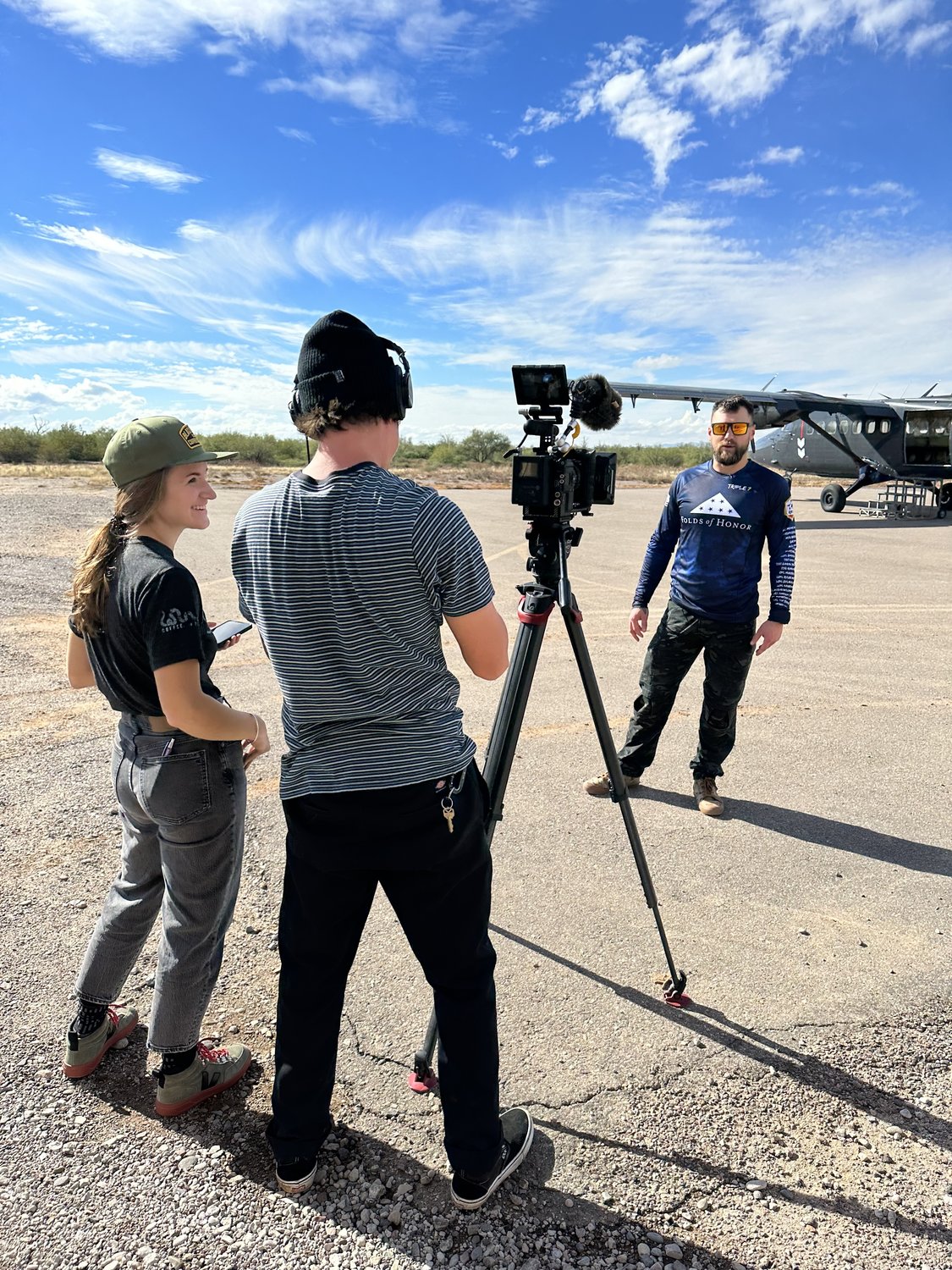
Jenna Biter is a staff writer at Coffee or Die Magazine. She has a master’s degree in national security and is a Russian language student. When she’s not writing, Jenna can be found reading classics, running, or learning new things, like the constellations in the night sky. Her husband is on active duty in the US military. Know a good story about national security or the military? Email Jenna.
BRCC and Bad Moon Print Press team up for an exclusive, limited-edition T-shirt design!
BRCC partners with Team Room Design for an exclusive T-shirt release!
Thirty Seconds Out has partnered with BRCC for an exclusive shirt design invoking the God of Winter.
Lucas O'Hara of Grizzly Forge has teamed up with BRCC for a badass, exclusive Shirt Club T-shirt design featuring his most popular knife and tiomahawk.
Coffee or Die sits down with one of the graphic designers behind Black Rifle Coffee's signature look and vibe.
Biden will award the Medal of Honor to a Vietnam War Army helicopter pilot who risked his life to save a reconnaissance team from almost certain death.
Ever wonder how much Jack Mandaville would f*ck sh*t up if he went back in time? The American Revolution didn't even see him coming.
A nearly 200-year-old West Point time capsule that at first appeared to yield little more than dust contains hidden treasure, the US Military Academy said.












